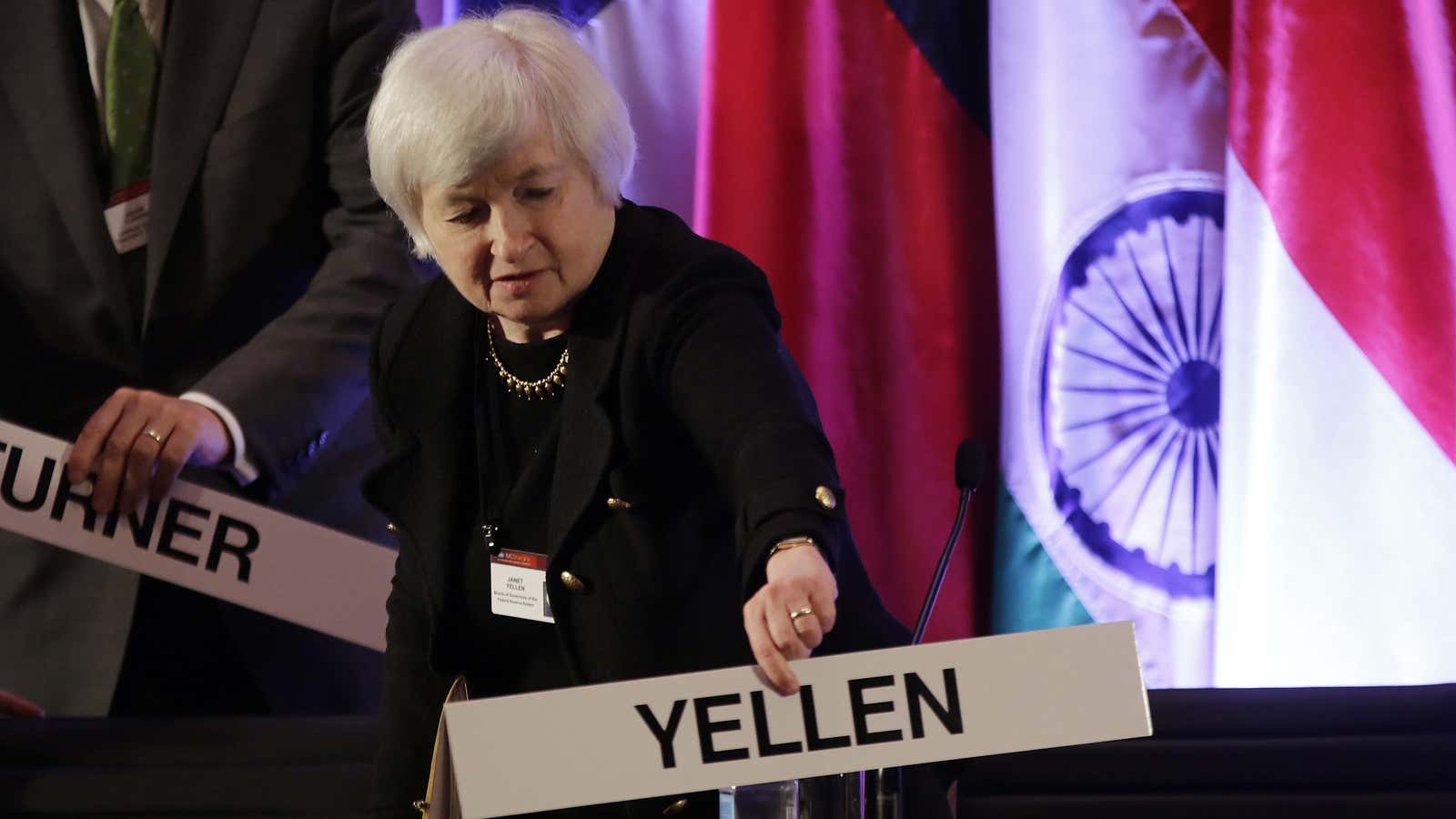Today US president Donald Trump made a long-expected announcement: Janet Yellen will not serve a second four-year term as head of the Federal Reserve. Jerome Powell, currently a member of the Fed’s board of governors, will take over when Yellen’s term ends in February.
Powell’s policy views are so close to Yellen’s that he’s been called “the [Republican] version of Yellen.” (She was appointed by president Barack Obama.) In five years on the Fed’s main policy committee he’s never cast a dissenting vote. Just yesterday, Trump himself said Yellen was “excellent.” Yet, in a break with nearly four decades of precedent, he’s not giving her a second term.
Perhaps Trump just likes to be seen to be appointing people. In that case, giving Powell the job is a smart move—Trump gets all the benefits of Yellen’s steady-handed policies and reassures markets that there’ll be continuity while still making himself look decisive and presidential. Yet by forcing Yellen, the first female Fed chair in history, to hand over the reins, he sends an unmistakable message that women in positions of influence are all too used to hearing: Their accomplishments aren’t enough to prevent them being replaced by the next man in line.
In that light, it’s worth recapping just what Yellen achieved during her four years running the US central bank in the wake of the worst recession in nearly a century.
Top achievements
Yellen took over as the Fed was preparing to end “quantitative easing” (QE), the bond-buying program that it had been using since 2008 to pull the economy out of the financial crisis. This was a move fraught with risks: When Yellen’s predecessor, Ben Bernanke, announced that he wanted to begin “tapering” QE in mid-2013 he sparked market chaos and the plan had to be postponed. Yellen took over in February 2014; by October of that year the bank had calmly reduced its monthly purchases of securities to zero.
The next big move was to start raising interest rates, which had been kept at effectively zero for seven years. This, like ending QE, risked sending markets into a spin at the fear that higher rates might stifle the economy’s recovery. By the time Yellen did it in December 2015, however, the move had been so well telegraphed in advance that stock markets rose, reacting to Yellen’s assurances that any further increases would come slowly and gradually. She’s kept to her word; there have only been three rate hikes since.
Next, the Fed had to start unwinding the unprecedented $4.5 trillion in securities that it had accumulated during the years of QE. Again, advance signaling was key: The central bank started floating the move in the summer of 2017, and by the time it was confirmed in September, the markets barely even managed a shrug.
As Powell takes over, he’ll need to continue that trend of steadiness and predictability, and it’s expected that he will. But it’s worth remembering any confidence he enjoys will largely be thanks not to his own (entirely respectable) career up to this point; it’ll be down to the fact that Yellen showed the way.
